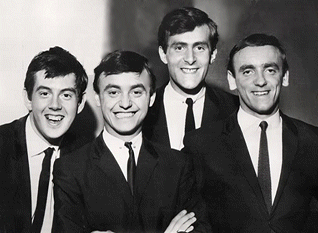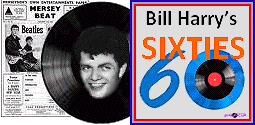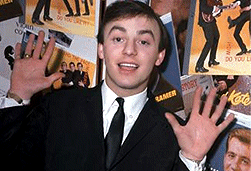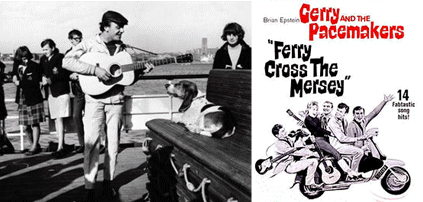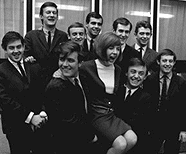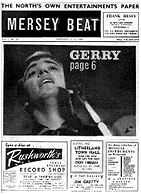 |
Gerry’s
second single, another Mitch Murray composition, ‘I Like It’, also topped
the British charts. Murray offered them a third number, ‘You Can’t Fool
Me,’ but Gerry decided to record ‘You’ll Never Walk Alone’ instead,
giving him a hat trick of No.1’s, the first artists in British recording
history to achieve such a feat (it placed Gerry & The Pacemakers in
‘The Guinness Book of Records’).
No one has bettered this feat, although it was equalled by another Liverpool
band, Frankie Goes To Hollywood, exactly 20 years later with, ironically,
Gerry’s ‘Ferry ‘Cross the Mersey’ featured on the flipside of one of
the No.1 hits, ‘Relax.’
Hits in 1964 were ‘I’m The One’, ‘Don’t Let The Sun Catch You Crying’,
‘It’s Gonna Be All Right’ and ‘Ferry ‘Cross The Mersey.’ His two final
hits were in 1965, ‘I’ll Be There’ and ‘Walk Hand In Hand.’ Brian Epstein
tried to steer Gerry & The Pacemakers down the same path as The Beatles
– smart suits by Douggie Millins, photos by Dezo Hoffman, a Gerry &
The Pacemakers Christmas Show, a film ‘Ferry ‘Cross The Mersey’, a Gerry
& The Pacemakers monthly magazine and an American tour with an ‘Ed Sullivan
Show’ appearance in May 1964. In fact, Gerry was so successful on the
Sullivan show that he was booked to appear again the following week. |

